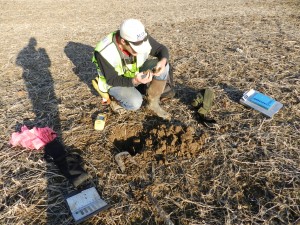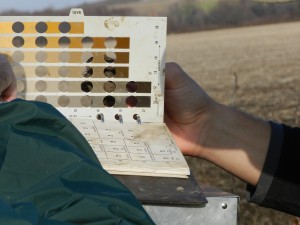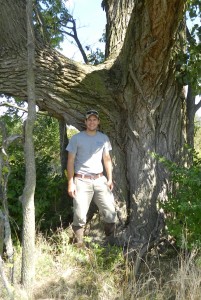
By Brent Macolley, Environmental Scientist
At MAD Scientist & Associates, our primary focus is ecological and wetland consulting projects. These include wetland determinations and delineations, permitting, ecological surveys and habitat characterization, as well as restoration and mitigation projects for both streams and wetlands.While working on wetland projects, we rely on hydrology, vegetation, and soils as the three key indicators to determine if the area of interest is (or has the potential to be) a functional wetland.
Soil Types & Mitigation
Of particular interest to me is the assessment of wetland soils as an indicator to the success or failure of a wetland mitigation site. When determining whether a site is suitable for a future mitigation project we look at several factors, including its topographic relief (or position in the landscape), position within the larger watershed, such as the upstream drainage area and location of perennial streams, and the soil’s ability to hold water (noting that minor modifications are often necessary to create conditions for wetland development). With a minimal amount of earth moving, we want to alter the site and create topographic features that will retain water long enough to develop the wetland indicators listed above. Proper site selection is vital to creating a successful wetland, and it begins with identifying soils that will retain water. Appropriate soils reduce the amount of earth moving necessary, which limits impacts to the site and reduces overall construction costs. To determine whether a site can hold water for long periods of time through slow rates of infiltration into the ground, it’s necessary to characterize the soils.

Using Munsell for Wetland Soil Classification
When examining the soils at a particular site, we identify transect lines along the site’s topographic gradient, and begin to probe or excavate soil profiles. Once we have a soil profile, we can begin characterizing the soil in that particular location. We need only a handful of tools to conduct a field characterization of soils, including a soil knife, ruler, hand lens, and the most important of all: a clean Munsell Color soil book.

We begin the soil characterization by determining the layers, or horizons, in the soil profile. Once we have established these, we can begin to record the structure, texture, and color of each layer. We use the Munsell Color book to identify the appropriate color of the matrix, or dominant color within a particular layer. We continue to list any other colors that appear in each layer of the profile. These other colors could be redoximorphic features, organic material, contaminants, etc. The soil characterizations, along with soil infiltration data, can help in determining an ideal site for creating a wetland.
Early site analysis can help not only in reducing construction costs but also has the potential to reduce long-term control of invasives that might be spread during site disturbance and avoid the possibility for site failure through a lack of water retention. In wetland science and restoration ecology, Munsell Color books are one of the important tools we use to make informed decisions that will help ensure the success of our projects.
About the Author

Brent Macolley holds a B.S. in Business from The Pennsylvania State University. He worked in the field of transportation logistics before returning to school and earning a B.S. in Environment and Natural Resources, with a specialization in Soil Science, from The Ohio State University. He has worked as Site Engineer for the internationally-acclaimed Olentangy River Wetland Research Park at OSU. For two summers, he worked as an intern with the Ohio Environmental Protection Agencies Wetland Ecology Group on the National Wetland Condition Assessment. He has a particular interest in the development of hydric soil indicators as well as soils used in mitigation wetlands. His diverse background in business and environmental science has led to his interest in finding simple and functional solutions to environmental problems.



Leave a Reply